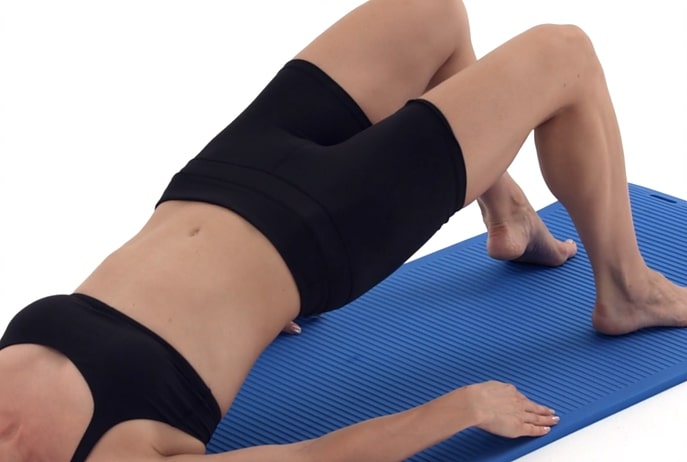Did you know in 2013 in Australia, almost 26,000 hip replacement operations were performed? That number is expected to grow to a staggering 80,000 by 2030.
if you’re one of the 25% of women and 16% of men over the age of 55 who suffer from osteoarthritis of the hip this is for you!
Osteoarthritis is the (some would say) inevitable process of wear and tear that occurs on the body as we get older. Several factors influence whether you will develop arthritic changes like your body weight, level of activity and whether you have had any previous injuries, but generally the joints that are most used are the ones that will develop changes like cartilage damage and growth of bony spurs. For this reason, and the fact that they carry the load of most of our body, the knee and hip joints are among the most symptomatic.
You may have been along to your GP or the ever knowledgeable Dr Google, and found out the best form of management for osteoarthritis is exercise. Yet many patients arrive at our clinic asking our physios how on earth exercise will make them better when simply moving around doing every day activities like getting in and out of the car causes them to turn to pharmaceuticals to assist with managing their discomfort. The scientific evidence even suggests that although best practice guidelines recommend exercise as the first line of management for hip osteoarthritis, general exercise provides only slight benefits for pain and physical function and no significant benefit on overall ratings on quality of life.
I know – this all sounds like doom and gloom.
Do we just throw the doctor’s advice out the window and sign up for an appointment with the orthopaedic surgeon tomorrow?
Where does this leave us?

…wait for it… Here’s the part where we get to deliver the GOOD news!
The question you really should be asking your health practitioner is – What exercise is best? and How much should you do?
That same review that found that l exercise wasn’t all that helpful for hip osteoarthritis also found that most exercise programs being performed were very general. The majority of exercise programs we come across advise patients to work whole muscle groups, without paying special attention to the problem area or specific muscles. While this seems to be effective in improving the strength for patients with osteoarthritis of the knee, it’s certainly not the case for the hip.
The hip joint is a ball and socket joint, that has much more variable movement patterns than the knee, with its (relatively) more simple back and forth motion. To achieve this variety of movement the hip is controlled by multiple layers of muscles the deepest of which are quite small. Each muscle performs it’s role to create the overall movement. The larger prime movers like the gluteus maximus provide gross movement and power whereas the tiny, deep muscles provide fine control and alignment of the ball within the socket of your hip joint.
Pain from an inflamed hip causes inhibition or a “switch-off” of the muscles that control it. Long term this leads to the muscles to become disused and weakened. Weakness in any part of this finely tuned symphony creates significant problems and a vicious cycle emerges as the arthritic changes get worse, muscular strength declines and further arthritic changes occur etc. etc.
Whilst we cant reverse the changes happening to the bones and cartilage in your hip, what we can stop is this cycle. The best evidence available says we need to target the specific gluteal and deep hip muscles that stabilise the hip in order to best help people suffering from hip osteoarthritis to achieve better results. By rehabilitating a these muscles, physiotherapists believe we have even found a way to slow down the disease in people with early-stage hip osteoarthritis and a new study with funding from Arthritis Australia, Arthritis New Zealand and La Trobe University is currently underway to prove it.

What is the best way to target the deep gluteal and hip muscles?
When you think of exercises that target the gluteal or bottom muscles most people immediately assume squats and lunges. While these are great, function exercises, they won’t be enough to target those specific muscles deep in your hip joint. These muscles can be targeted through exercises that focus on rotation of the hip like clams and those that control your pelvic position when you’re in an asymmetrical position, so exercises where you’re standing or working one leg at a time are great.
At Activate Physiotherapy our Physiotherapists love using exercises influenced by Pilates to rehabilitate and strengthen the hips of our clients with arthritis. The reformer is a great piece of equipment that can add resistance but also provide support when doing exercises on one leg and those that focus on pelvic control and hip rotation. Resistance can be added without adding impact to the joint so you get the positive effect on strength without aggravating your symptoms and there are such an amazing variety of exercises you’ll never get bored. You can find out more about our Physiotherapy and Group Physiotherapy services that include Pilates influenced exercise programs here.
We’ve put together an exercise program to get you started but as always, before starting an exercise program if you have an injury or health condition you are managing you will achieve the best results with a thorough assessment and individually prescribed program from your physio.

